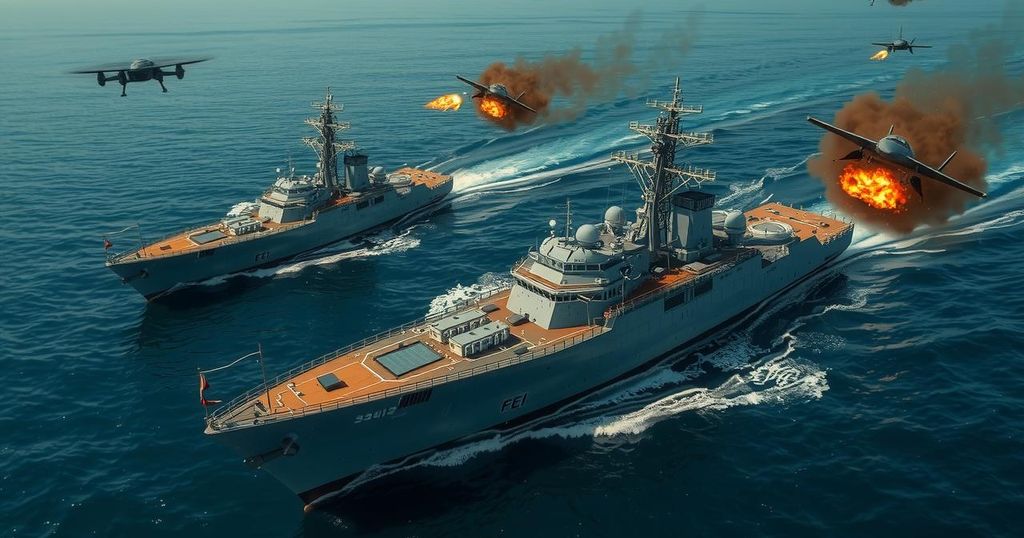Two U.S. Navy destroyers were attacked by Houthi missiles and drones off the coast of Yemen. The Pentagon confirmed successful interception of the threats and subsequent retaliatory airstrikes targeting Houthi weapon storages. The incident reflects ongoing hostilities in the region, aided by Iranian support for Houthi rebels, with implications for U.S. maritime security efforts.
On Monday, two Navy destroyers, the USS Stockdale and USS Spruance, were attacked by Houthi rebels using a mix of drones and missiles while navigating the waters between Yemen and Djibouti. The Pentagon confirmed that the vessels successfully intercepted at least eight drones and a total of eight missiles during the incident. In retaliation, U.S. forces conducted precise airstrikes against Houthi weapon storage facilities targeting U.S. and international shipping in the Red Sea. The attack reflects a broader pattern of escalating violence in the region perpetuated by Houthi forces, who are supported by Iran. They have increasingly targeted not only commercial interests but also U.S. naval operations. In light of this aggression, the Navy took action, utilizing F-35C Lightning II fighter jets as part of their response. According to Major General Pat Ryder, the Pentagon press secretary, these retaliatory measures were vital in ensuring the safety of essential maritime routes. The Houthi forces have recently made provocative claims regarding their ability to strike U.S. naval assets, with their spokesman asserting attacks on the USS Abraham Lincoln. However, Pentagon officials indicated that these claims lack credibility, confirming that the Lincoln was not present during the incident involving the Stockdale and Spruance. This marked the first notable confrontation for U.S. naval forces since late September, when prior attacks had prompted defensive responses from destroyers in the area. Previous engagements have resulted in commendations for naval vessels that have faced enemy fire, underlining the significant operational challenges being encountered during this ongoing conflict.
Since the onset of heightened hostilities in the region due to the civil war in Yemen, Houthi rebels have increasingly escalated their military operations against both commercial and military vessels. These attacks have notably targeted U.S. naval forces, which are deployed to ensure freedom of navigation in one of the world’s key maritime corridors. The Pentagon has consistently outlined strategies to protect American interests amidst these threats, engaging in both defensive and offensive operations as the situation evolves, particularly in relation to Iranian-backed Houthi activities.
In summary, the recent Houthi attack on the USS Stockdale and USS Spruance underscores the rising tensions in the region and the persistent threat posed by these groups against U.S. naval forces. The Navy’s prompt retaliatory airstrikes reflect a commitment to safeguarding international trade routes and respond decisively to aggression. Such events are indicative of the ongoing and complex military landscape faced by U.S. forces in the region, emphasizing the necessity for continued vigilance and operational readiness.
Original Source: www.military.com





